32 GB Unbuffered DIMMs Listed from Ten Brands: DDR4-2400 to DDR4-4000
by Anton Shilov on July 31, 2019 10:00 AM EST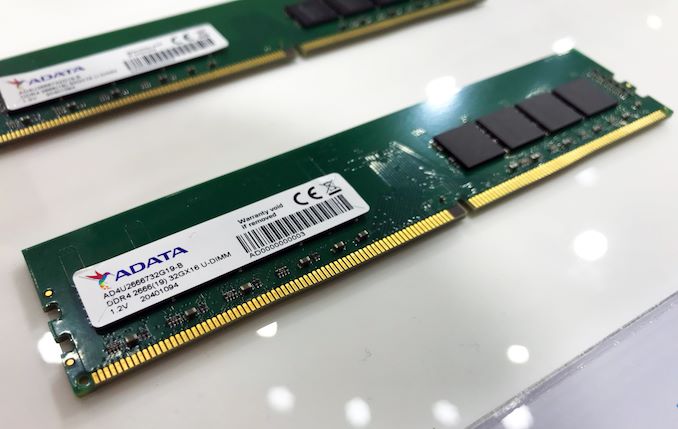
Now that both Samsung and Micron are shipping their 16 Gb DDR4 memory chips to third parties, we're seeing wider availability of 32 GB unbuffered memory modules (UDIMMs). To date, eight brands have either introduced, or started to sell their 32 GB unbuffered DIMMs, and in the coming months more manufacturers are expected to follow.
The Basics
Before we proceed, let us recap the basics here. Because of the way memory sub-systems work, high-capacity memory modules (in our case, 32 GB and higher) for workstations and servers are built differently than regular DIMMs for client PCs (which are called unbuffered DIMMs, or UDIMMs). Registered DIMMs (RDIMMs) carry a register chip that buffers the address and command signals, whereas the Load Reduced DIMMs (LRDIMMs) replace the register with an Isolation Memory Buffer that buffers the command, address, and data signals. While both the register chip and the IMB allow hardware vendors to build high-capacity memory modules and memory subsystems, neither RDIMMs nor LRDIMMs work with regular client platforms. Therefore, if you use a contemporary desktop and need a lot of memory for some reason, you'll need 32 GB UDIMMs.
You can read more about contemporary types DIMMs an appropriate article covering different types of contemporary memory modules
At the time of writing, 32 GB UDIMMs are supported by client platforms based on AMD’s 400 and 500-series chipsets as well as Intel’s 300-series chipsets.
The List
Back in July, 2019, Twitter user momomo_us, who is from Japan, managed to get a list of 32 GB unbuffered memory modules that were either available then or were about to hit the shelves there. We took that list, added information about 32 GB UDIMMs we knew of at the time and issued the first version of the story. Several months from the initial publication we add details about recently launched 32 GB unbuddered DDR4 modules.
UPDATE 11/1: Adding details about 32 GB modules from G-Skill and Team Group, clarifying official data transfer rates of Micron's 16 Gb DRAMs.
UPDATE 12/21: Adding details about 32 GB ADATA XPG Hunter memory modules, clarifying specifications of regular 32 GB ADATA modules.
UPDATE 1/10: Adding details about 32 GB modules from Kingston HyperX as well as low-latency modules from G.Skill.
UPDATE 2/8: Adding details about 32 GB UDIMMs from Crucial and GIGABYTE.
UPDATE 2/20: Adding details about G.Skill's 256 GB DDR4-3600 CL16 (8×32 GB) kit for AMD Threadripper 3000-series CPUs.
There are a number of remarks to be made about 32 GB memory modules. Samsung’s mass-produced 16 Gb DDR4 memory chips are rated for 2133 MT/s, 2400 MT/s, and 2666 MT/s data transfer rates, yet even the company itself sells 32 GB DDR4-2933 memory modules. Meanwhile, its partners go all the way to DDR4-3000, albeit at 1.35 Volts. Micron's 16 Gb DDR4 devices are rated for 2933 and 3200 MT/s operation (which is within JEDEC's DDR4 specification), but many modules based on these chips are rated at 2400 or 2666 MT/s at 1.2 Volts.
| List of 32 GB Unbuffered Memory Modules Announced Note: Data is not official |
|||||||||
| Brand | Data Rate (MT/s) |
Latency | Voltage | DRAM Vendor | PN | Notes | |||
| ADATA | 2666 | CL19 | 1.2 V | Micron | AD4U2666732G19-B | - | |||
| ADATA XPG | 3000 | CL16 | 1.35 V | Micron (?) | ? | - | |||
| 3000 | CL17 | 1.2 V | Micron (?) | ? | SODIMM | ||||
| Asgard | 2666 | CL16 | 1.2 V | ? | ? | - | |||
| 3000 | CL16 | 1.35 V | ? | ? | - | ||||
| Corsair | 2400 | CL16 | 1.2 V | Micron | ? | - | |||
| 2666 | CL16 | 1.2 V | Samsung | ? | - | ||||
| 3000 | CL16 | 1.35 V | Samsung | ? | - | ||||
| Crucial/Micron | 2666 | CL19 | 1.2 V | Micron | CT2K32G4DFD8266 | - | |||
| 3200 | CL22 | 1.2 V | Micron | CT2K32G4DFD832A | - | ||||
| 2666 | CL19 | 1.2 V | Micron | CT2K32G4SFD8266 | SODIMM | ||||
| 3200 | CL22 | 1.2 V | Micron | CT2K32G4SFD832A | SODIMM | ||||
| GIGABYTE | 3200 | CL16 | 1.35 V | ? | GP-DSG64G32 | - | |||
| G.Skill | 2666 | CL18/CL19 | 1.2 V | Samsung | ? | - | |||
| 3200 | CL14 | ? | ? | ? | - | ||||
| 3200 | CL16 | 1.35 V | Samsung | ? | - | ||||
| 3600 | CL16 | 1.35 V | Samsung | ? | 256GB kit | ||||
| 3600 | CL18 | 1.4 V | Samsung | ? | - | ||||
| 3800 | CL18 | 1.35 V | Samsung | ? | - | ||||
| 4000 | CL18 | 1.4 V | Samsung | F4-4000C18-32GVR | - | ||||
| Gloway | 2400 | CL17 | 1.2 V | ? | ? | - | |||
| 3000 | CL16 | 1.35 V | ? | ? | - | ||||
| Kingston HyperX | 2400 | CL15 | 1.2 V | ? | HX424C15FB3/32 | - | |||
| 2666 | CL16 | 1.2 V | ? | HX426C16FB3/32 | - | ||||
| 3000 | CL16 | 1.35 V | ? | HX430C16FB3/32 | - | ||||
| 3200 | CL16 | 1.35 V | ? | HX432C16FB3/32 | - | ||||
| 2400 | CL15 | 1.2 V | ? | HX424S15IB/32 | SODIMM | ||||
| 2600 | CL16 | 1.2 V | ? | HX426S16IB/32 | SODIMM | ||||
| 2933 | CL17 | 1.2 V | ? | HX429S17IB/32 | SODIMM | ||||
| 3200 | CL20 | 1.2 V | ? | HX432S20IB/32 | SODIMM | ||||
| Samsung | 2666 | CL19 | 1.2 V | Samsung | M378A4G43MB1-CTD | - | |||
| 2933 | ? | ? | Samsung | M471A4G43AB1-CVF | - | ||||
| Team Group | 2400 | CL16 | 1.2 V | Micron | TED432G2400C1601 TPD432G2400HC1601 TPRD432G2400HC1601 |
- | |||
| 2666 | CL19 | 1.2 V | Micron | TED432G2666C1901 TPD432G2666HC1901 TPRD432G2666HC1901 |
- | ||||
The Modules
Now that we know the specs, let us talk about the modules themselves:
ADATA
ADATA was among the first companies to showcase its 32 GB DDR4-2666 CL19 at 1.2 V unbuffered DIMMs at at Computex 2019. Eventually, the manufacturer started to offer these products to its customers. Meanwhile, considering JEDEC-standard clocks and timings, it is likely that these UDIMMs are aimed mostly at OEMs.
For channel market and PC makers who need advanced memory modules, ADATA introduced its XPG Hunter 32 GB UDIMMs and SO-DIMMs late in 2019. These modules usea customized black PCB and come equipped with branded heat spreaders that makes them look rather stylish.
The ADATA XPG Hunter 32 GB UDIMMs are rated for DDR4-3000 CL16 operation at 1.35 V, which makes them an interesting choice for overclockers who could increase clocks at the cost of timings. Meanwhile, the XPG Hunter 32 GB SODIMMs look special as they are rated for DDR4-3000 CL17 operation at 1.2 V, a rather unique combination of a decent speed, agressive timings, and a JEDEC-standard voltage. The latter is probably a requirement from notebook makers who would like to stay within a JEDEC-specified voltage ballpark and keep their thermals in check.
Asgard
Asgard’s Loki T2 and W2 memory modules are designed for enthusiasts, so they come with heat spreaders. The 32 GB DDR4-3000 CL16 modules need 1.35 V voltage and therefore need an enthusiast-class platform. Meanwhile, their 32 GB DDR4-2666 CL16 modules use industry-standard 1.2 V voltages.
Corsair
Corsair’s 32 GB Vengeance LPX unbuffered DIMMs come with DDR4-2400, DDR4-2666, and DDR4-3000 speeds. Depending on speed bins, these modules reportedly use memory chips from Micron or Samsung and require 1.2 V or 1.35 V. Corsair’s UDIMMs traditionally rely on the company’s custom 10-layer PCB designed to ensure quality signaling when operating at higher clocks, and are equipped with black heat spreaders.
Crucial/Micron
Micron’s Crucial brand introduced its DDR4-2666 CL19 32 GB UDIMMs back at Computex, but it too the company about half of a year to bring these modules to the market as they only became available in late January. In addition to moderate DDR4-2666 modules and kits, Crucial also offers DDR4-3200 CL22 UDIMMs and dual-channel kits for performance-demanding consumers. Furthermore, the compny also has 32 GB DDR4-2666 and DDR4-3200 SODIMMs.
Crucial’s 32 GB UDIMMs do not feature any heat sinks, but use industry-standard voltage, which makes them compatible with a wide variety of PCs.
GIGABYTE
GIGABYTE released its dual-channel 64 GB Designare memory kit tested to operate in DDR4-3200 mode with CL16 18-18-38 latency at 1.35 V in early February aiming at high-end system based on latest AMD Ryzen as well as Intel Core processors.
The combination of high speed and low latency is designed to attract attention of enthusiasts building a PC with 64 GB (or even 128 GB) of memory and not satisfied with standard JEDEC-set specifications.
G.Skill
G.Skill demonstrated its 32 GB UDIMMs at Computex and finally launched them in early October. Being one of the biggest suppliers of memory for retail and enthusiasts, G.Skill decided to address different types of customers with its high-capacty modules and for this reason introduced 32 GB memory sticks featuring six speed ratings in blingy Trident Z Royal (for Intel) and high-tech Trident Z Neo (for AMD) liveries.
For PC makers and customers in budget, G.Skill offers DDR4-2666/CL18/CL19 and DDR4-3200/CL16 32 GB modules. For those who want something faster, DDR4-3200/CL14, DDR4-3600/CL18, DDR4-3800/CL18, DDR4-4000/CL18 are set to be available. Finally, for extreme enthusiasts with AMD's latest 64-core Ryzen Threadropper 3990X-based system G.Skill plans to offer an octa-module 256 GB kit rated for DDR4-3600 with CL16 operation somtimes in Q2 2020. The higher-end 32 GB UDIMMs require 1.35 V - 1.4 V voltage, so they will need motherboards with a DRAM VRM that can provide clean and quality power.
As for pricing, given the unique combination of performance and capacity, expect G.Skill’s advanced 32 GB unbuffered DIMMs to cost more than competing products.
Gloway
Gloway’s 32 GB UDIMMs are rated to operate at DDR4-2400 CL17 and DDR4-3000 CL16 speed bins, according to the listing. Depending on performance, the modules need 1.2 V or 1.35 V and come with heat spreaders.
Kingston HyperX
Kingston's HyperX introduced its 32 GB memory modules in early 2020, a bit later than some of its rivals. Meanwhile, the company's family of 32 GB UDIMMs is among the broadest in the industry. For desktops, Kingston offers 32 GB HyperX Fury UDIMMs rated for DDR4-2400/CL15 at 1.2V, DDR4-2666/CL16 at 1.2 V, DDR4-3000/CL16 at 1.35 V, and at DDR4-3200/CL16 at 1.35 V operation. For laptops, there are 32 GB HyperX Impact SO-DIMMs featuring DDR4-2400/CL15, DDR4-2600/CL16, DDR4-2933/CL17, and DDR4-3200/CL20 at 1.2 V speeds.
Samsung
Samsung was first to start to producing 16 Gb DDR4 memory chips and was naturally the first to launch 32 GB UDIMMs. At present, the company offers DDR4-2666 CL19 and DDR4-2933 32 GB unbuffered DIMMs that come without any heat spreaders (based on the pictures of the modules from AVADirect).
Team Group
Team Group has decided to take a relatively cautious approach to 32 GB unbuffered DIMMs, which is why the only speed grades offered by the company this Fall will be DDR4-2400 CL16 and DDR4-2666 CL19 at 1.2 V despite the fact that Micron's 16 Gb chips (which the company uses) can go significantly higher. Meanwhile, the manufacturer offers 32 GB modules in three designs: the Elite 32 GB UDIMMs are not equipped with any heat spreaders and are likely aimed primarily at PC makers, whereas the Elite Plus 32 GB modules come with Gold & Black or Red & Black radiators to please the eye of the DIY crowd.
The company is working on enthusiast-class 32 GB DDR4 UDIMMs, but these will only be available sometimes in Q1 2020, so it is too early to make assumptions about their data transfer rates and other peculiarities.
Related Reading:
- Team Group Quietly Launches 32 GB DDR4 Memory Modules
- G.Skill Launches 32 GB DDR4 Modules, 256 GB Kits: Up to DDR4-4000
- Corsair Unveils 32 GB Vengeance LPX DDR4 DIMMs, 64 GB & 128 GB Dual-Channel Kits
- Samsung 32GB DDR4-2666 Non-ECC Memory at Retail: $168
- ADATA Demonstrates 32 GB DDR4 Modules, Built on Micron 16 Gb
- Crucial 32 GB DDR4 Modules Found in an ASRock System
Sources: ADATA, Corsair, Crucial, G.Skill, Samsung, Team Group, Twitter/momomo_us



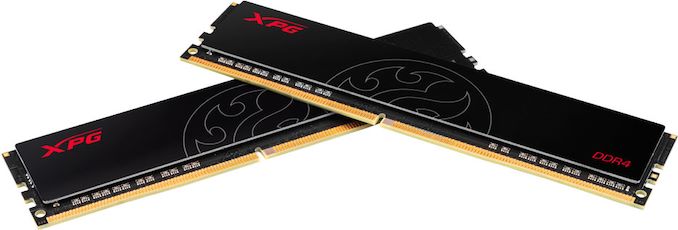
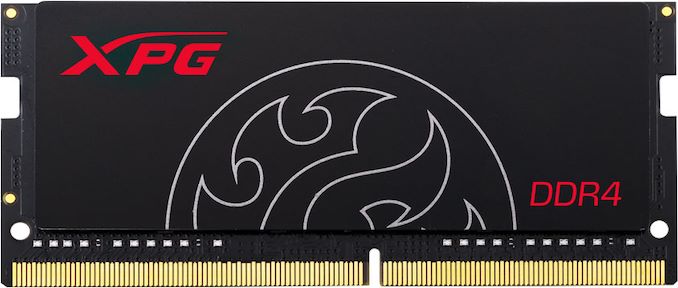
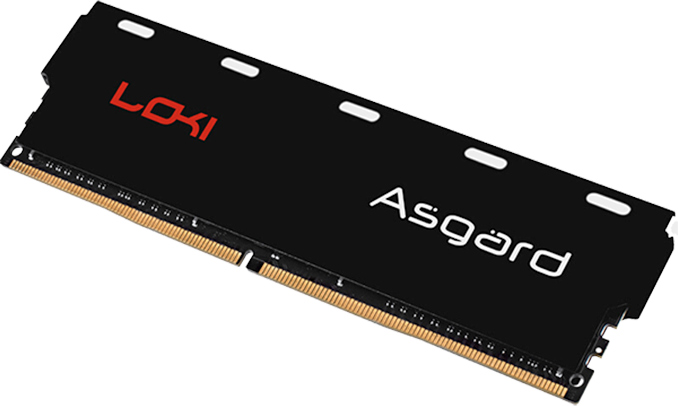
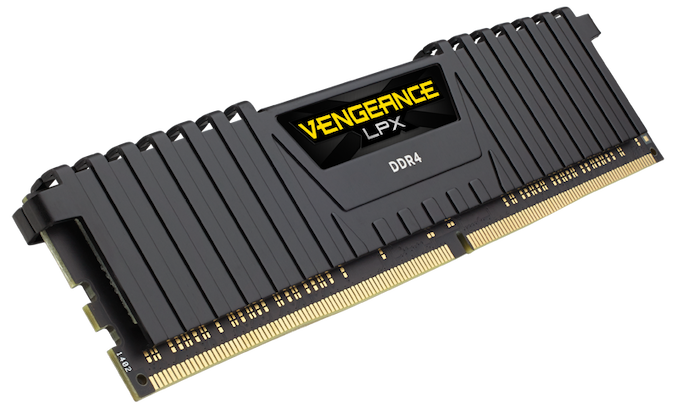
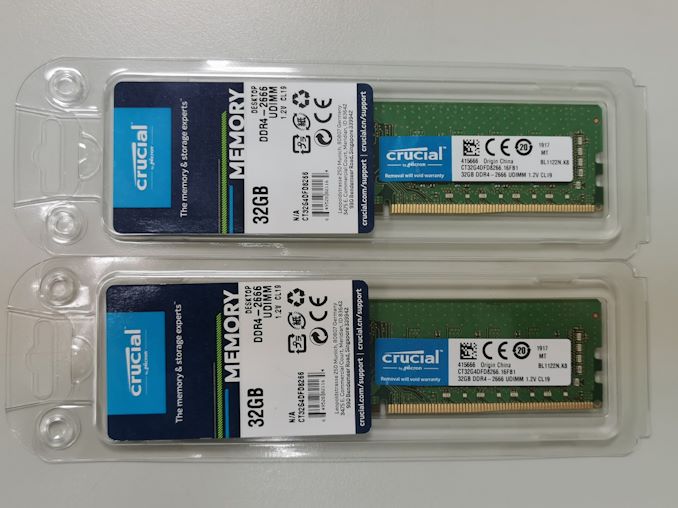
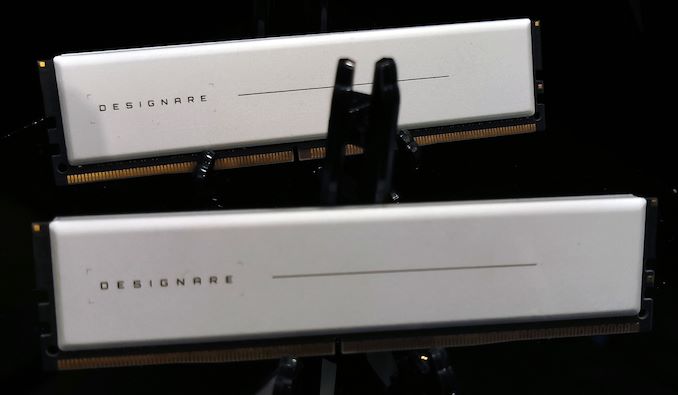
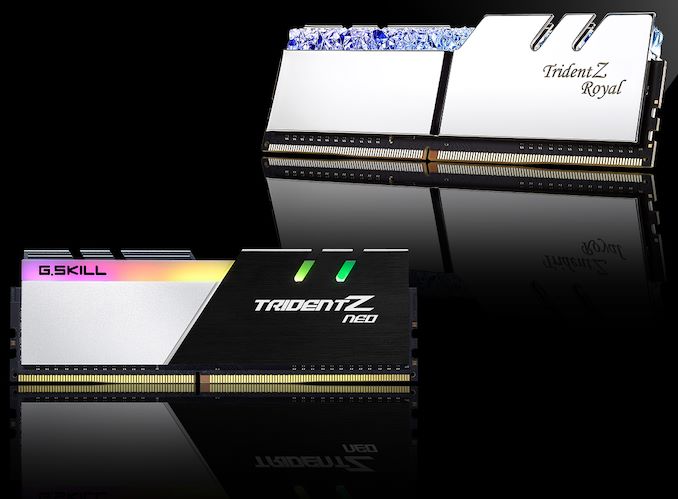
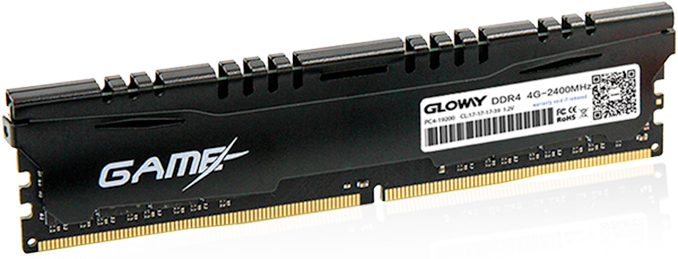
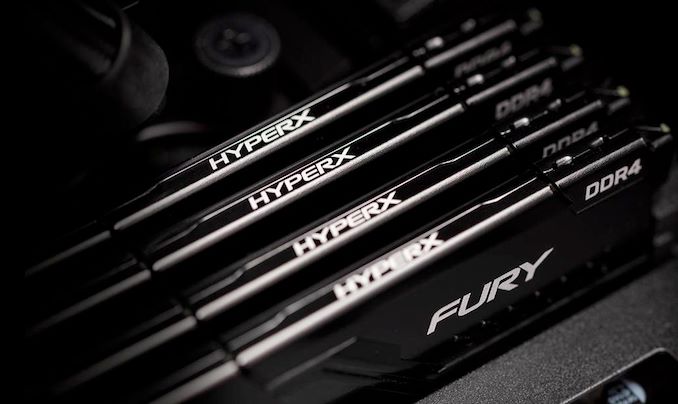

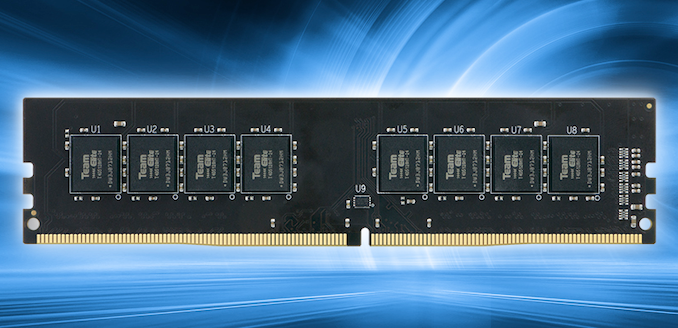









12 Comments
View All Comments
DigitalFreak - Wednesday, July 31, 2019 - link
Quick check of Newegg shows that going from DDR4-2666 to DDR4-3200 more than doubles the price on a 32GB stick.extide - Wednesday, July 31, 2019 - link
Yeah but you can ignore those G.Skill 3200 modules as they are the older double stack 32x8Gb DIMMs. Nothing faster than 2666 using the new 16Gb chips on Newegg, yet.abufrejoval - Wednesday, July 31, 2019 - link
Looking at those modules reminds me about my troubles trying to buy RAM (nice prices for a change) that can last more than a single generation of machine: With machines getting smaller, mobile, NUC and ITX the traditional DIMM form factor seems rather wasteful in terms of mainboard surface area and yet the extra real-estate on the BO-DIMMs (for BIG outline) vs. the SO-DIMMs doesn't really seem to matter any more: Available traces and TTL loads seem the limit not surface area (except perhaps for cooling some crazy overclocked ones).I'd really like to be able to move modules between laptops, NUCs and desktops because sockets are after all there to decouple life cycles. But I cannot find 35/65/95 Watt mainboards with CPU sockets or even soldered SoC that accept SO-DIMMs, except some really special (old and expensive) embedded designs.
No vendor trying to jump for Mini-ITX and 4 sockets of SO-DIMM? There are back-sides and overlapping mounts for laptops and DDR4-2400/2666 doesn't seem to get that hot anyway.
Ej24 - Thursday, August 1, 2019 - link
Check asrock rack. Their server/professional boards are really good and they often have surprising, uncommon options/form factors, like 4x sodimm on an itx boardabufrejoval - Tuesday, August 6, 2019 - link
Yep, but those are LGA 2066 boards, not quite the price range I had in mind :-)I am looking for laptop technology in a Mini-ITX form factor for low power/low noise server use and some flexibility in terms of RAM/storage/GPU/cooling configuration at a price below that of the laptop (after all, significant parts are left out). Basically that's what NUCs are, except for the Mini-ITX. Of course I can get a silent case for a NUC at premium prices, but most of the time a Noctual will do well enough: No need for silence, when unnoticeable is enough. A Mini-ITX gives me that choice and if I should need to put a beefy GPU (or some other PCIe card) into the board, I just move it into a mini-tower case: Modularity is wonderful and a PC feature since 1981!
But evidently I run against the constraints of scale, since my interest is either shared by too few, or someone wants to maintain market segmentation. I basically want Xeon D functionality at Xeon E3 economy. Since AMD pushed Intel to 6, 8 and soon 10 cores on the desktop, the premium on Xeon D/Xeon 2100 is under threat.
The ECC premium on Intel CPUs and chipsets has almost disappeared over the last years, perhaps because AMD put a pressure point there (alas, without validatiotion too often).
In some cases that doesn't matter, in others (ZFS) I still don't like taking chances.
It's a persistent problem in IT: All components are basically there, nobody want to sell them in the permutation I want. Am I being unreasonable?
PeachNCream - Wednesday, July 31, 2019 - link
I hate it when the DIMMs aren't buffered. Their floors are a lot more more dull looking.mickulty - Wednesday, July 31, 2019 - link
I suspect that samsung module picture is an older "stock photo" as it's the A1 PCB layout (shared with D1 ECC) - any new OEM module especially DDR4-2666 and higher I'd expect to be on A2.That said it would also be very surprising if there was a heatspreader on a UDIMM, and AVADirect's search function categorises them as no heatspreader so the article's definitely not wrong :-)
Atari2600 - Thursday, August 1, 2019 - link
Will these work on X399? (Boosting Threadripper to 8x 32GB = 25GB DRAM)Grayswean - Thursday, August 1, 2019 - link
Officially: no. Unofficially: probably. Motherboard makers aren't going to validate and support it working, but hopefully someone else will test it out for us.b3081a - Sunday, August 4, 2019 - link
At least someone has already validated those kits against 2700X on a B350 board. I guess Threadripper won't be worse anyway.FYI: https://www.reddit.com/r/Amd/comments/ck0e1o/128gb...